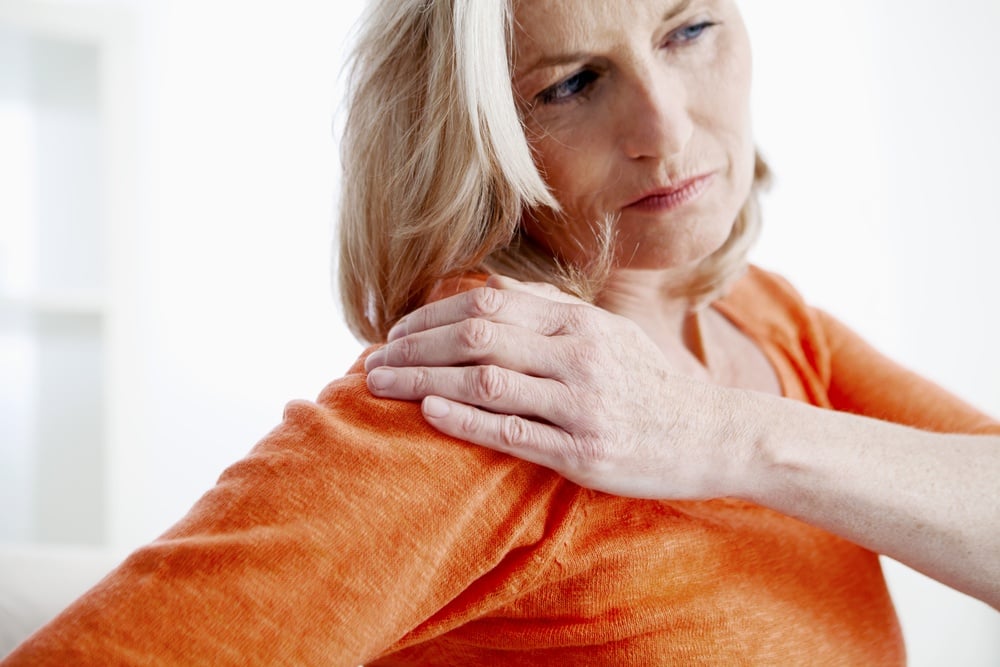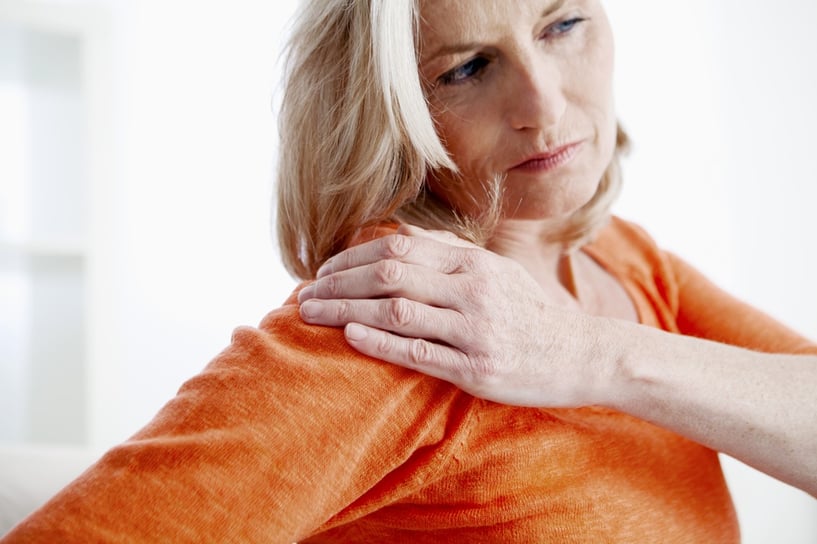
Have you been experiencing a popping or grinding pain in your shoulder, especially when lifting anything higher than your head? Or has one of your shoulders felt weaker than the other, and felt painful when held in one particular position?
Although these symptoms can be common to many shoulder problems, having all of these conditions at once could mean you have suffered a SLAP Lesion Tear.
WHAT IS A SLAP LESION TEAR?
A SLAP Lesion Tear means that the cartilage that connects your arm to your shoulder has been damaged. This ring of shoulder cartilage is called the labrum.
- The labrum surrounds the outer edge of a shallow socket (glenoid) in your shoulder blade (scapula).
- This socket is where the ball-like top of your upper arm bone (humerus) nestles.
- The labrum actually makes the glenoid socket deeper and more stable, making possible the amazing flexibility that makes the shoulder the most mobile joint in the entire body.
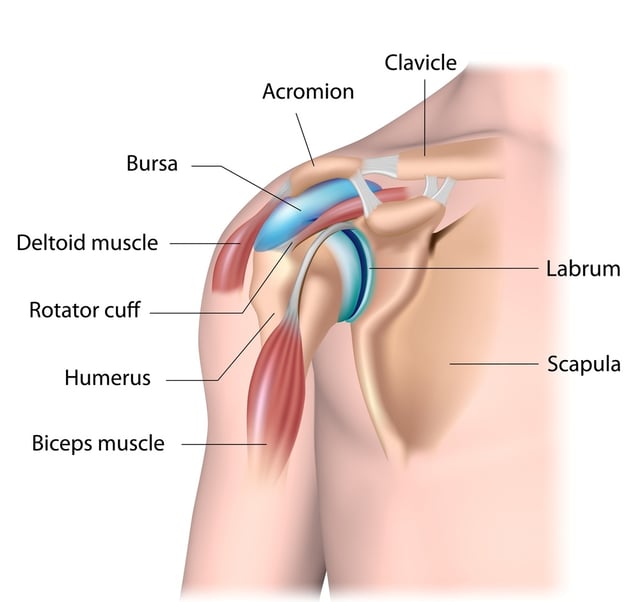
CAUSES AND RISK FACTORS
SLAP is an acronym which means “Superior Labrum Anterior and Posterior.” The term “SLAP Lesion Tear” literally means a rip on the top, front, and back of the labrum.
The severity of this condition may be split into three common causes:
- Normal daily usage. Typical “wear and tear” from normal use can result in minor fraying, wearing, and tearing of the upper labrum. In all people over the age of 40, this may be considered part of the normal process of aging.
- Impact or motion injuries. The sudden shock of a hard impact, such as in a car accident or a fall onto one’s shoulder or outstretched arm, can damage not only the labrum but also the shoulder itself. Labrum tears may also occur when trying to catch or lift an unexpectedly heavy object, or by making rapid, energetic movements of your arms above shoulder height.
- Repetitive movements. Athletes in particular are vulnerable to this kind of injury, especially those who throw or lift objects. Baseball pitchers are among the most well-known victims of SLAP lesion tears. Even though a baseball only weighs five ounces, the violent overhand and sidearm motions required to hurl a ball up to 100 mph will inevitably accumulate labrum damages quickly.
SIGNS and SYMPTOMS of a labrum (SlAP) tear
Although many shoulder injuries share common signs and symptoms, the following conditions in your shoulder may indicate you are suffering from some type of SLAP tear:
- A catching, clicking, popping, or locking sensation
- Pain that only appears when you hold your arm in a specific position, or when lifting objects overhead
- General pain, weakness, or unusual wiggling or movement (instability)
- Decreased flexibility, strength, or range of motion
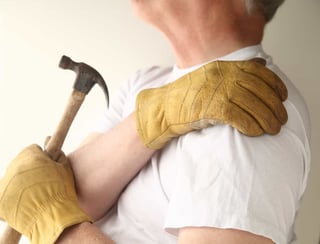
In addition, some people with SLAP tears report that their shoulder constantly feels as if it is about to pop out of its socket.
Baseball pitchers with this injury commonly report feeling a “dead arm.” Their pitches clearly show a drop in velocity, as well as a loss of the movement that defines an effective professional pitcher.
DIAGNOSIS
As surgery is the best way to absolutely determine whether or not you have a SLAP Lesion Tear, it is important to help your doctor decide whether this procedure is necessary by doing the following:
- Tell your doctor about any and all physical activities that may have caused your shoulder injury. This includes recreational, work-related, and daily in-home actions, as well as any impact injuries to the affected shoulder.
- Have your doctor put you through simple tests to check your shoulder’s range of motion, strength, stability, and flexibility. You will be instructed to move your arm and shoulder in different directions, and to report on any sensations you may feel within the shoulder, including pain and discomfort.
- X-rays may be taken to rule out any skeletal issues, such as fractures, and denser-tissue problems, such as arthritis.
- An MRI scan (magnetic resonance imaging) may be considered to show the condition of your body’s soft tissues.
TREATMENT
Once your doctor has determined the presence and severity of a SLAP Lesion Tear, any or all of the following treatments may be recommended, in order of complexity:
- Medication. Over-the- counter (OTC) drugs can be helpful in relieving pain and inflammation. These types of medications are called non-steroidal anti-inflammatory drugs, or NSAIDs, and include ibuprofen and naproxen.
- Ice and/or Heat Pack. Using an ice pack or heat pack on the shoulder can help relieve pain and swelling. One or the other, but not both at once, may be applied in several cycles of 15 minutes on, 15 minutes off, for best effectiveness.
- Sling. If the shoulder is very painful, it may be immobilized by putting the arm into a sling. This simple first-aid measure provides excellent support for the injured shoulder, and may prevent additional injury through accidental arm movements. Slings can be particularly effective in case of impact injuries.
- Physical therapy. Your doctor or physical therapist may prescribe a regimen of exercises designed to gently improve flexibility, as well as to strengthen the muscles surrounding the shoulder.
- Arthroscopic surgery. This procedure is the only way to completely ascertain the extent of damage to the labrum.
- The first step is for the surgeon to make a small incision in the shoulder.
- Next, the miniature camera, or arthroscope, is inserted through the cut, allowing direct observation inside the shoulder joint itself.
- If the arthroscope reveals significant damage to the labrum, the surgeon may choose to operate immediately.
- Guided by the scope, one or more additional incisions will then be made for insertion of miniature surgical instruments. Procedures may include removing damaged portions of the labrum (debridement) and stitching tears closed (suturing).
- Full recovery from arthroscopic surgery may take several months, and will require the use of slings, NSAIDs, and physical therapy or sports medicine for complete healing. The good news, though, is that the majority of arthroscopic surgery patients do enjoy significant improvement — and most importantly, less pain — after successfully completing the process.
To learn more about SLAP lesion tears and treatment options, give Coastal Orthopedics located in Corpus Christi, TX a call. Telephone: 361.994.1166.
Article written by: Rob Williams, MD
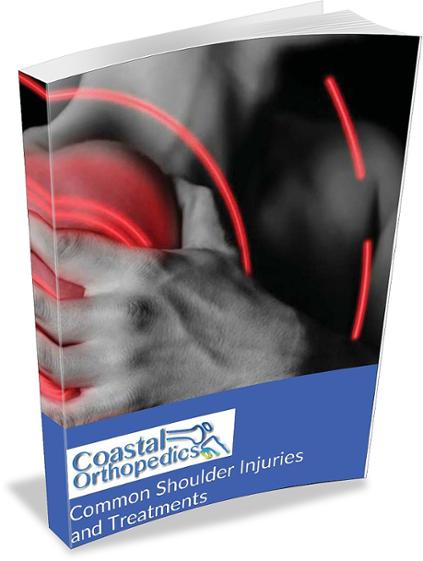
Rob S Williams, MD
Dr. Williams has been practicing orthopedic surgery in Corpus Christi since 1998. After graduating from Texas Tech hereceived his medical degree from the University of Texas at San Antonio. At the prestigious Campbell Clinic located at the University of Tennessee, Dr. Williams completed not only an Orthopedic Surgery Residency, but an additional year of Fellowship Training in Spine Surgery. Dr. Williams is dedicated to creating an excellent patient experience in the office or in the surgery suite.
